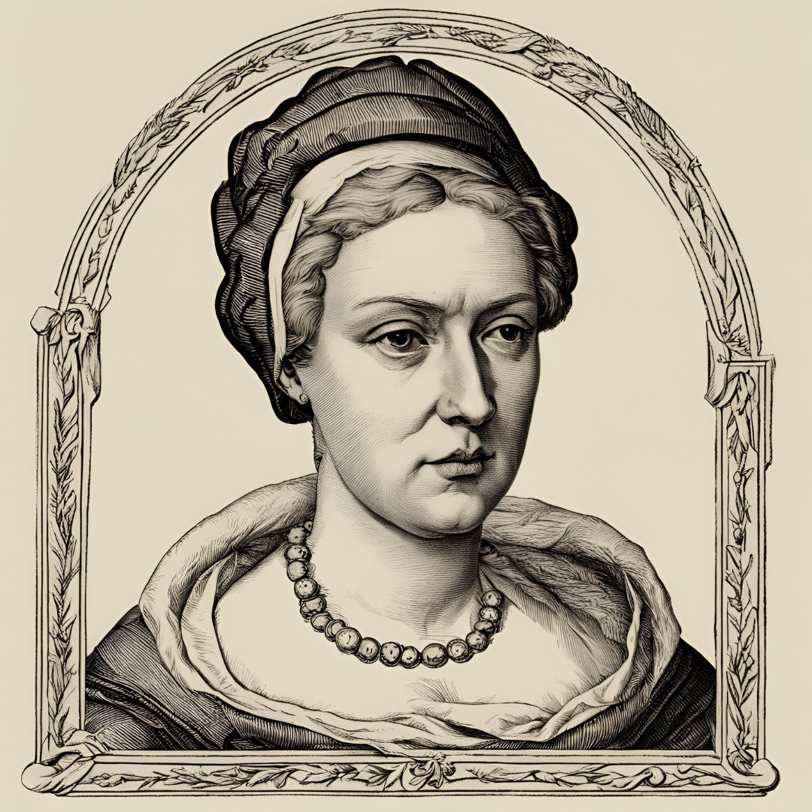Gender Roles in the Elizabethan Era
Examination of the social and cultural expectations of women during the Elizabethan period, and how Anger's work challenged these norms.
JANE ANGER
FEMINNATE
7/28/20243 min read


The Elizabethan era (1558-1603), marked by the reign of Queen Elizabeth I, was a period of significant cultural and social development in England. Despite the presence of a powerful female monarch, societal expectations for women remained rigid and patriarchal. This era saw strict gender roles that dictated the behavior, responsibilities, and opportunities available to women. Jane Anger's "Her Protection for Women," published in 1589, challenged these entrenched norms, providing a bold defense of women's rights and capabilities.
Social and Cultural Expectations of Women:
Subordination to Men
Women were expected to be subservient to men, whether as daughters, wives, or widows. The patriarchal family structure positioned men as heads of households, with women fulfilling roles of obedience and service. The notion of male superiority was deeply ingrained in both law and custom.
Domestic Responsibilities
The primary role of women was to manage the household. This included tasks such as cooking, cleaning, child-rearing, and managing servants if the family was wealthy enough. Women's contributions to the domestic sphere were valued, but they were rarely acknowledged as significant beyond their immediate family.
Limited Educational Opportunities
Education for women was minimal and generally focused on domestic skills rather than intellectual development. While some women of the upper classes received an education that included reading and writing, this was the exception rather than the rule. The prevailing belief was that intellectual pursuits were unsuitable for women.
Marriage and Motherhood
Marriage was considered the primary duty of women. Their value was often tied to their ability to secure a good marriage and produce offspring, particularly male heirs. Unmarried women and widows faced social stigmatization and limited financial security.
Public vs. Private Sphere
Women were largely confined to the private sphere of home and family. Public life, including politics, business, and intellectual endeavors, was dominated by men. Women who ventured into these areas often faced criticism and ostracism.
How Anger's Work Challenged These Norms:
Defense of Women's Virtue and Intelligence
Jane Anger’s "Her Protection for Women" argued against the prevailing notion that women were morally and intellectually inferior to men. She claimed that women possessed virtues and intelligence equal to those of men, thus challenging the assumption that women were naturally suited only for domestic roles.
Critique of Misogyny
Anger's pamphlet was a direct response to the misogynistic literature of her time. She refuted common accusations against women, such as deceitfulness and moral weakness, and turned these critiques back on men, highlighting their hypocrisy. By doing so, she challenged the cultural narrative that justified women's subordination.
Assertion of Equality
A central theme in Anger's work is the inherent equality of men and women. She argued that women are equally capable of reason, virtue, and achievement, and any differences observed were due to social conditioning rather than natural inferiority. This assertion undermined the basis for gendered social roles.
Advocacy for Female Solidarity
Anger emphasized the importance of women supporting and defending each other against male oppression. This call for female solidarity was a radical departure from the individualistic expectations placed on women to conform to patriarchal norms. By advocating for collective action, Anger suggested that women could resist societal constraints.
Challenging Educational Restrictions
Although Anger did not directly advocate for formal education for women, her defense of women's intellectual capabilities implicitly challenged the restrictions on their education. By asserting that women could reason and argue as well as men, she questioned why they were denied the same educational opportunities.
Conclusion
Jane Anger's "Her Protection for Women" stands as a significant challenge to the rigid gender roles of the Elizabethan era. By defending women's virtue and intelligence, critiquing misogyny, asserting equality, advocating for female solidarity, and challenging educational restrictions, Anger confronted the social and cultural expectations that confined women to subordinate roles. Her work not only provided a voice for women in a male-dominated society but also laid the groundwork for future feminist thought. The pamphlet's bold arguments remain a testament to the enduring struggle for gender equality and women's rights.
Further Readings
"Elizabeth I and Her Age" edited by Donald Stump and Susan M. Felch - Provides a comprehensive view of the societal and cultural context of Elizabethan England, including gender roles.
"The Norton Anthology of Literature by Women: The Traditions in English" edited by Sandra M. Gilbert and Susan Gubar - Contains selections and discussions of early women writers including Jane Anger.
"Women and Gender in Early Modern Europe" by Merry E. Wiesner-Hanks - Offers an in-depth analysis of the roles and perceptions of women in early modern Europe, including the Elizabethan era.
"Feminism and Renaissance Studies" edited by Lorna Hutson - Explores feminist perspectives on Renaissance literature and culture, providing context for Anger’s work.
"A Room of One's Own" by Virginia Woolf - Woolf’s exploration of women writers in history provides a broader context for appreciating Anger’s contributions.
